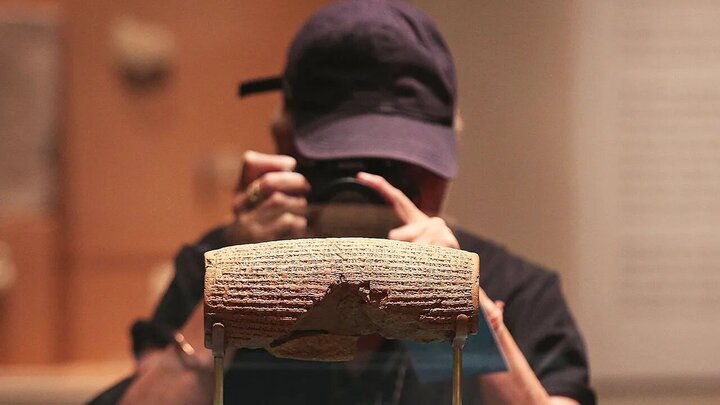Iran minister says UNESCO recognition of Cyrus Charter reflects deep cultural roots of justice

TEHRAN – Iran’s minister of cultural heritage, tourism and handicrafts said the United Nations Educational, Scientific and Cultural Organization’s recognition of Cyrus the Great’s Charter demonstrates that justice has long been embedded in Iranian culture.
Reza Salehi-Amiri made the remarks on Saturday at an international Iranology conference, held at the Islamic Culture and Communication Organization. The event focused on “cultural dialogues, opportunities and cooperation capacities” and was attended by scholars and university professors from Armenia, Greece, Uzbekistan, Kazakhstan, Russia, Georgia, China, India, Pakistan, Sri Lanka, Malaysia, Tunisia, Oman, Iraq and other countries.
Salehi-Amiri said Iran represents “deep layers of history, culture and civilization,” adding that the country’s cultural identity has developed through continuity rather than rupture. He said this historical continuity has contributed to Iran’s survival despite multiple invasions over the centuries.
He described Iran’s history as an example of cultural resilience, saying that although the country has faced numerous invasions, “what remained was Iranian culture and civilization.”
Salehi-Amiri also highlighted Iran’s role along the ancient Silk Road, saying the country acted as a mediator among cultures, benefiting from and influencing diverse traditions. These exchanges, he said, contributed to a dynamic and global Iranian identity.
Elsewhere in his remarks, the minister underlined the UNESCO approval reflects long-standing Iranian values of justice, tolerance, respect for diversity and human dignity.
Salehi-Amiri added that Iran is one of the few countries offering almost all forms of tourism, and its handicrafts--supported by more than 299 registered works--preserve the country’s “aesthetic texture and historical memory.”
Earlier this month, the UN cultural body adopted a resolution recognizing the Cyrus Cylinder as one of the world’s earliest declarations promoting cultural diversity and human rights. The resolution, titled “Cyrus Cylinder: An Early Charter of Human Rights and Cultural Diversity,” was jointly proposed by Iran and Tajikistan and approved by a majority of member states at the 43rd session of the UNESCO General Conference held in Samarkand.
The resolution encourages UNESCO member states to raise public awareness of the Cyrus Cylinder, translate its text into various languages for educational purposes, and use its values to promote peace and cultural coexistence. It marks the first time an ancient Iranian artifact has been formally recognized at the global level as a document associated with the origins of human rights.
The Cyrus Cylinder, a small clay tablet measuring about 23 centimeters in length and 11 centimeters in width, is inscribed in Akkadian cuneiform and housed in the British Museum. It dates back to around 539 BCE, when Cyrus the Great, the founder of the Achaemenid Empire, captured Babylon in present-day Iraq.

The inscription describes how Cyrus defeated Babylon’s king Nabonidus with the favor of the god Marduk and subsequently allowed religious freedom in the city. It records that Cyrus returned displaced peoples to their homelands and restored their temples and deities.
The cylinder remained buried for more than 2,400 years until it was discovered in 1879 by British archaeologist Hormuzd Rassam during excavations in Mesopotamia.
The cylinder gained renewed attention in the late 1960s when Iran’s last Shah of Iran described it as the “world’s first charter of human rights.”
AM
Leave a Comment